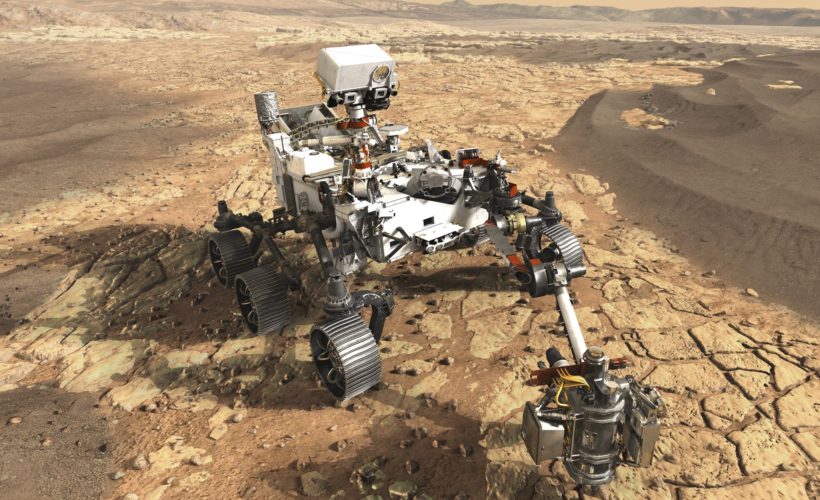NASA has to start protecting planets better. The international treaty governing space—there is one—and the laws and regulations that follow it date back to the Cold War. That was before scientists knew about the oceans on moons around other planets, before they knew about how tough microorganisms get here on Earth (and so maybe in space too?), before they started planning experiments to look for life on Mars, and before tech billionaires started threatening to send people to space.
So if NASA’s Planetary Protection Officer—there is one—is going to live up to the coolest job title in the solar system, the space agency is going to need some different rules for keeping Earth’s bugs on Earth and alien strains on Andromeda (or wherever).
That’s the takeaway from a new report from the National Academies of Sciences, Engineering, and Medicine out today. America’s spaceketeers face some radical new challenges, it says. Some of them are the result of new experimental priorities and decades of scientific advance, and some of them are due to plain old scientific infighting.
Planetary Protection has two basic missions. “Backward protection” means making sure that nothing dangerous in space gets back to Earth. “Forward protection” is making sure that no Earthly gunk makes it off-world—primarily so that it doesn’t contaminate whatever science an Earth-born probe is doing.
None of that has ever really been a problem. Sample return missions to asteroids and a comet were no big deal; cosmic radiation sterilizes those. And Mars rovers have cautiously tiptoed around parts of Mars that have the potential to harbor life, or to have harbored it. “But we’re getting ready to go to places that have the potential for supporting viable life—the surface of Mars and the deep oceans of Europa and Enceladus,” says Joseph Alexander, a consultant and former NASA science mission director who chaired the NAS study. “The private sector is getting particularly interested in Mars. The international community of players who want to go to various planets is growing. And there’s a plan that the US has to send humans to Mars by 2030.” Space is about to get crowded, which means it’s even more important not to screw it up.
So Alexander’s panel recommends a few changes. Moving the Office of Planetary Protection to the department at NASA that’s responsible for safety might open up a few blocked channels. The report also suggests earlier discussions between space mission planners and planetary protectors, and more money for tools and analytics to determine just how clean something going to space needs to be. Another idea: Close the “regulatory gap” that lets commercial space companies skirt planetarily protective rules. (Apparently the SpaceX Falcon 9 that launched a Tesla never actually got the go-ahead for cleanliness, which is probably fine because it’s not supposed to intersect with anything planet-like for 10,000 years.)
The missions and asteroid mining of the future aren’t the only things pushing a revamp of planetary protection. The office has not always gotten along with the people who build spaceships, back to the beginning of the space program. “In the early days, it was very much the scientific community that advocated for forward and backward contamination control, forward to preserve science and backward because it was responsible,” says John Rummel, a biologist and NASA’s planetary protection officer from 1998 to 2006. “But if you get people who are not attuned to flight projects and how they work, you can get wrapped around the axle.”
Difficult negotiations over the Mars 2020 mission were a real breaking point. Some of the scientific instrumentation was repurposing designs used on the Curiosity lander, but because Mars 2020 is also the beginning of a possible sample return mission, Planetary Protection was holding it to a higher standard of cleanliness. Rumor says that those disagreements led to the sudden departure of the last planetary protection officer, Cassie Conley. Her replacement, Lisa Pratt, pitched looser regulations in one of her very first speeches after taking on the job.
The thing is, every time science improves, standards for cleanliness change. Scientists have more sensitive ways to look for life elsewhere, and to kill it off of spacecraft before they leave Earth. In practice, though, that means that just murdering Earthling microorganisms before a mission isn’t enough anymore. “They kill everything, but that doesn’t mean the thing is no longer on the spacecraft,” says Luther Beegle, a JPL astrophysicist and lead investigator on the “Sherloc” life-hunting sensor to be mounted on the Mars 2020 rover’s robot arm. “You could have a spacecraft with nothing but organic carcasses that weren’t visible.” And those could still trick the detector.
Since the Mars 2020 problems, the dynamic between OPP and JPL seems better. “The adversarial stuff is a little overblown,” Beegle says. “Everybody knows planetary protection is a good thing. It’s just a matter of how you implement it.”
Now the trick for NASA will be to bring the private sector and other countries on board with a new ruleset. And then? Alexander says that a regular human presence on Mars will change everything again. “We talk about whether policy says there is essentially a sunset clause on planetary protection,” he says. “Is it a strategy that initially lets humans go in some restricted areas and protects the rest of the planet, or the reverse, protecting small enclaves on Mars and letting humans go everywhere else?”
Planetary Protection only looks at life; its policies don’t say anything about pollution, or garbage, or crummy Mars colony architecture. “The larger ethical and aesthetic issues are real,” Alexander says. “But we did not address them.” No report can help the Office of Planetary Protection protect a planet against the future.
More Great WIRED Stories
- The new arms race threatening to explode in space
- PHOTO ESSAY: Hong Kong’s vanishing rooftop culture
- Turning an old Volvo concept into a $155,000 hybrid
- Going to the World Cup? Leave the laptop at home
- The hustlers fueling cryptocurrency’s marketing machine
- Get even more of our inside scoops with our weekly Backchannel newsletter
Source:WIRED











